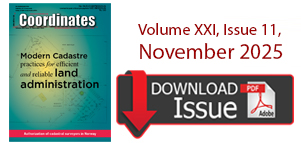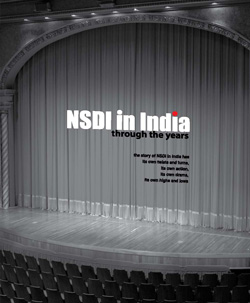Articles in the Articles Category

At SatNav, we have had the privilege of seeing the Indian GPS Navigation Industry from the year 2002, the time we launched our first voice based system, when comments like ‘who needs it?’, ‘my driver knows all the places’, ‘I prefer asking a panwallah to such devices’were the norm. Today the world has changed where the comments are, ‘why doesn’t it tell me the right way to my home?’ and ‘it’s a useful product’, ‘we appreciate…

Earth-observation techniques attract currently a substantial amount of interest and open fresh research and business opportunities for the geospatial community. They offer nowadays a broad spectrum of diverse platforms, sensors and products. UAV systems are paving their way into novel applications. The development of large format digital aerial camera systems has triggered a renewed interest in aerial photogrammetry…
The moon mission of India.
A display of technological prowess.
And willingness.
On November 4, Chandrayaan-1 …

GESS (GRAIL Environment and Sensor Simulator) is a real-time software prototyped for analysing the GNSS introduction in rail sector. It has been developed by DEIMOS Space in the frame of the GRAIL (GNSS Introduction in the RAIL Sector) contract, lead by Ineco/Tifsa, for the GNSS Supervisory Authority (GSA)…
Septemeber 2008
Institute of Navigation’s Satellite
Division ION GNS 2008
September 16-19, 2008
Savannah, Georgia, USA
http://www.ion.org
The Perspectives, The role of Surveyors in the European Economy and Society
17-19, September
Strasbourg, France
http://www.geometre-strasbourg2008.eu
CARIS 2008
September 22 – …
When professions like Engineering, Information Technology, etc thrive,
The surveying profession loses its charm.
Despite, Surveying is a critical Service also.
A Service that serves the society and people at large.
A ‘less rewarding’ profession, may be.
Not glorified. Not acknowledged.
But, it is a profession that lays the foundation of so much more.
Though foundations are invisible.
The importance of foundations …
Septemeber 2008
Institute of Navigation’s Satellite
Division ION GNS 2008
September 16-19, 2008
Savannah, Georgia, USA
http://www.ion.org
The Perspectives, The role of Surveyors in the European Economy and Society
17-19, September
Strasbourg, France
http://www.geometre-strasbourg2008.eu
CARIS 2008
September 22 – …

The study areas are situated in the Arabian Gulf. -It is a shallow sea with its long axis oriented in NW-SE direction, and its average water depth is about 36m. The Evaporation and wind are the main driving forces for water circulation in the Arabian Gulf. Evaporation is stronger in winter due to high wind speed, than summer when the water surface temperature is higher. The overall circulation in the inner Arabian Gulf is cyclonic…

The patented TIDGET® (“tracking widget”) sensor operates by taking brief snapshots of GPS data when activated [1]. These snapshots are stored in the flash memory and forwarded to the LocatorNet Server through the data link for processing [2]. The TIDGET is built using the RF front-end of a commercial GPS chip (see Figure 2). The device is designed to operate with a variety of different types of data links providing a low-power location solution…

The LBS market has been segmented into 3 main categories: • B2C: Business to Consumer • B2B2C: Business to Business to Consumer • B2B: Business to Business Details of this segmentation are provided in Figure 2. This segmentation highlights the diversity of services that can be offered by an operator. This diversity of services is also a diversity of business model. The LBS market has been especially Figure 1…










 (5.00 out of 5)
(5.00 out of 5)